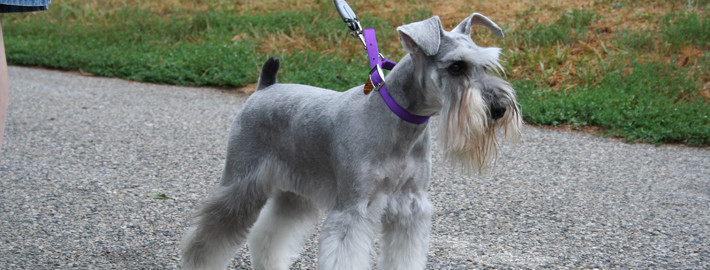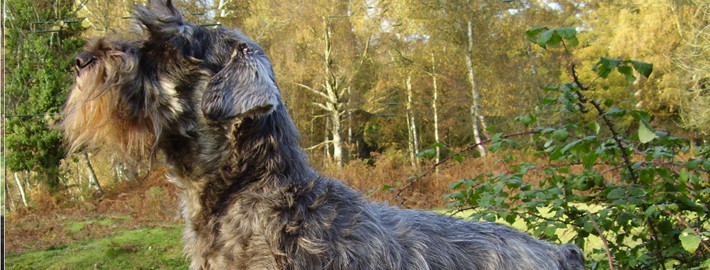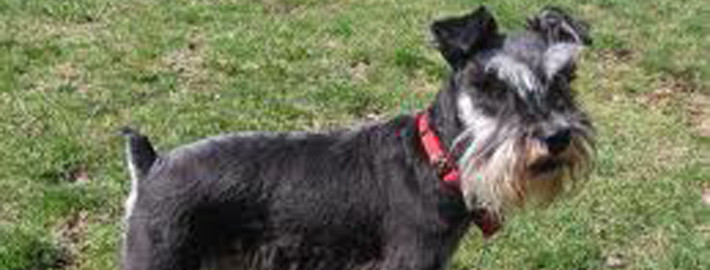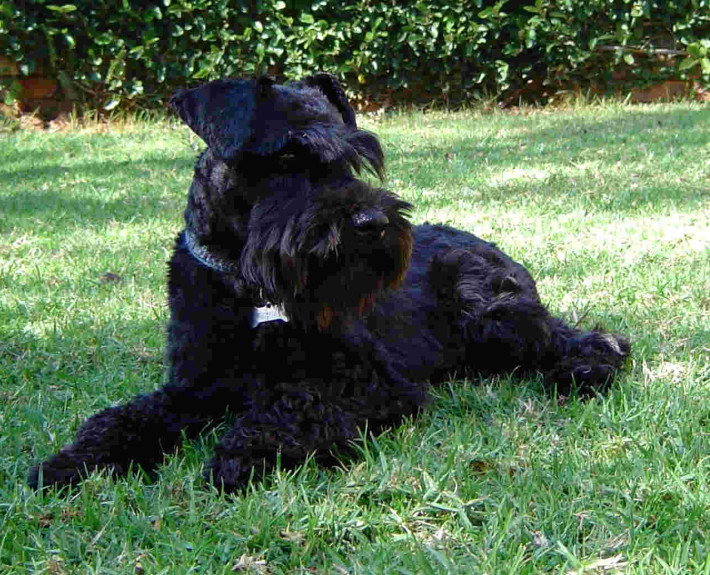What makes the Miniature Schnauzer Unique?
The Miniature Schnauzer is a robust little dog that can easily live in both rural and apartment settings when given enough exercise. These German dogs originally worked on farms in various capacities but today they are far more popular as a companion breed.
Breed Groups
Page Contents
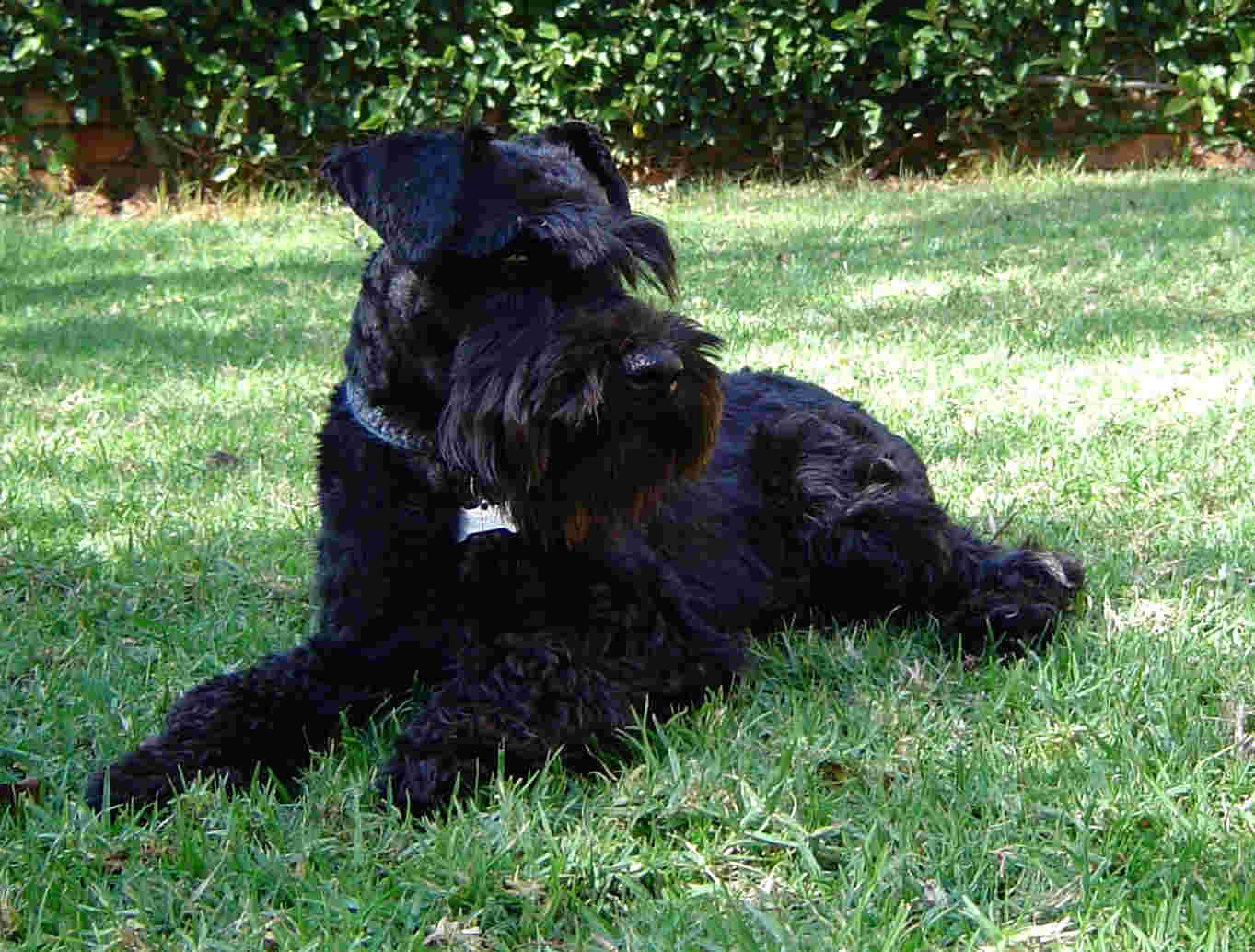
Is the Miniature Schnauzer Right For You?
Smart, trainable and consistently cheerful, this diminutive breed adapts easily to small city apartments, yet remains just as much at home in the country with lots of space to run around. Their double coat requires hand stripping for the show ring or clipping for the average pet owner, but sheds very little. If you are considering purchasing a Miniature Schnauzer puppy, learn more. *Terrier Group; AKC recognized in 1926.
*Ranging in size from 12 to 14 inches tall at the shoulder.
*Farm dog; companion.
In 5 Words
- Obedient
- Fearless
- Friendly
- Alert
- Intelligent
Characteristics
Learn About the Miniature Schnauzer
Description
General Description
These terriers are small with almost perfectly square, proportionate bodies. An elongated moustache is one of the noteworthy features of this breed. These dogs are also quite athletic in appearance and move with a powerful gait, as is indicated by their long history as vermin catchers. They have straight front legs, rectangular heads, and blunt-tipped muzzles. Black noses are another bred feature. These dogs have teeth that should meet in a scissors bite. Miniature Schnauzers also possess small dark brown eyes that are set deeply into their heads. Their high-set and tails ears may be cropped or left in their natural state depending on the regulations of their country of residence. In most portions of Europe, docking is considered an illegal practice and owners will need to act accordingly.
Size
Males of this breed stand about 14 inches (36 centimeters) in height and they typically weigh between 11 and 18 pounds (5.0 and 8.2 kilograms). Female Miniature Schnauzers instead stand 13 inches (33 centimeters) tall and are usually between 10 and 15 pounds (4.5 and 6.8 kilograms) in weight.
Coat
A double coat comprised of a coarse outer layer and a soft inner layer is a feature of this breed. Miniature Schnauzers also have lengthier fur on their eyebrows, muzzles, and legs. These dogs will usually have their coats clipped in order to display their prominent mustaches, eyebrows, and beards. Acceptable coat colors for members of this breed include black, salt and pepper, and black and silver. White Schnauzers exist as well but they are not officially recognized in America or in Canada.
Short History of the Miniature Schnauzer
Although dogs similar to members of this breed are shown in artworks dating back to the Middle Ages, the earliest records surrounding development of the Standard Schnauzer in Germany come from the late 19th century. Schnauzers were originally bred to be multipurpose farm dogs that were equally suited for the tasks of killing vermin, herding livestock, and guarding property. As function was the main concern for members of this breed, a wider variety of coat colors was present in the past than is currently seen today.
Eventually, a downsized version of these dogs was created so that they would be more effective at killing rodents and other small pest. This was accomplished by adding Miniature Poodles and Affenpinschers to the existent bloodlines. These dogs were originally known as Wirehaired Pinschers but eventually took the name of their most famous ancestor, an individual that had won a German dog show in 1879. Nine years later, the Miniature Schnauzer had arrived on the scene.
Although the First World War briefly put a stop to most dog breeding programs, Miniature Schnauzers made their way to the States some years after the fighting had ceased and the breed was officially admitted to the American Kennel Club in 1926. The United Kennel Club followed suit in recognizing these dogs in 1948, once the Second World War had finished.
To this day, there remains some international confusion as to which class the Miniature Schnauzers belong in. Americans class the breed as terriers while Canadians put them with the working group of dogs. Folks in Australia and in the United Kingdom instead categorize these dogs as part of the Utility Group.
Temperament
Miniature Schnauzers are popular for good reason. Once trained, these intelligent dogs are relatively obedient. They generally exhibit good manners indoors and tend to enjoy the companionship of children. Members of this breed are also less aggressive towards other animals than most of their fellow terriers. Owners should nonetheless note that Miniature Schnauzers still enjoy chasing smaller animals and should not be left alone with small pets they might view as prey such as birds and rodents These dogs are additionally prone the stubbornness that is characteristic of all terrier breeds. Some individuals have been reported as being sly. Others may bark excessively but all it takes is proper training to keep this habit from becoming an irritant.
Caring for Your Miniature Schnauzer
General Health
Born in litters of 3 to 6 pups, the Miniature Schnauzer has a lifespan of 12 or more years. Members of this breed often suffer from eye ailments, joint problems, intestinal stones, heart diseases, and an illness that causes them to regurgitate whatever they have just eaten. Muscular dystrophy, Von Willebrand’s disease, and a skin condition called Comedone Syndrome are also prevalent.
Care
Daily
These lively dogs need a brisk and suitably long daily walk. Jogging is also another favorite pastime of Miniature Schnauzers.
Weekly
Regular brushing of a dog’s teeth will prevent tooth decay and bad breath.
Monthly
Parasite prevention medication should be administered regularly. Most product need to be applied once a month for best results.
Grooming & Bathing
Miniature Schnauzers do not shed very much. However, hand stripping is necessary for show animals and other pet owners should definitely keep their dogs clipped. Owners that are showing their Miniature Schnauzers may save themselves some money by learning how to strip out their pet’s coat themselves as the procedure can otherwise become expensive. Members of this breed may also need to visit the professional groomer on a regular basis to keep their coats from becoming matted or tangled.
Exercise & Training
When these dogs are trained to show respect for authority, they make great pets. Regular training sessions are a good way to accomplish this. It is recommended that leashed Miniature Schnauzers walk beside their human companions on outdoor excursions. Care should likewise be taken to teach these dogs that they should follow people through gates and doorways instead of racing ahead. This helps individual dogs to view their human companions as leaders that they should obey rather than equals or even insubordinates. Members of this active breed also need a consistent outlet for their energy to keep them from becoming badly behaved or destructive.

